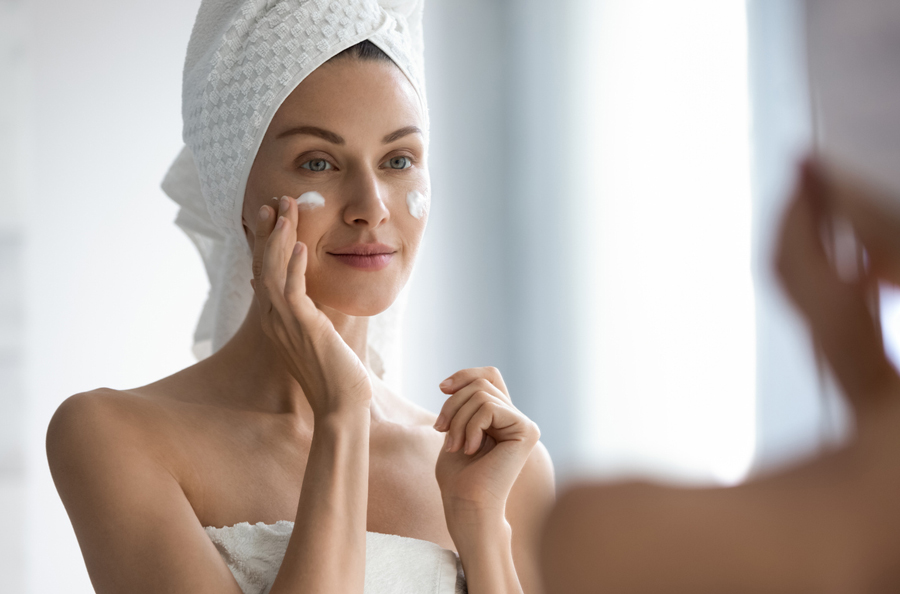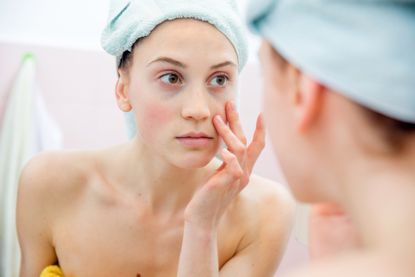Rosacea is a common but often misunderstood skin condition that affects millions of people worldwide. It typically presents as redness and visible blood vessels on the face, and in some cases, it can also produce small, red, pus-filled bumps. One of the most crucial aspects of managing rosacea is using the right skincare products, particularly moisturizers. This article will explore the best moisturizers for rosace what ingredients to look for, and how to properly care for rosacea-prone skin.

Understanding Rosacea and the Importance of Moisturizing
Rosacea is a chronic inflammatory skin condition that can flare up due to various triggers such as sun exposure, stres spicy foods, and certain skincare product. Keeping the skin well-moisturized is essential for those with rosace as it helps maintain the skin’s barrier function, reduce irritation, and minimize the visibility of redness.
A good moisturizer should hydrate the skin without causing further irritation or triggering a flare-up. Since rosacea makes the skin more sensitive, it’s vital to choose products that are gentle, non-comedogenic, and free from harsh chemicals.
Key Ingredients to Look for in a Moisturizer for Rosacea
When selecting a moisturizer for rosacea-prone skin, certain ingredients are particularly beneficial. Here’s a list of key ingredients to look for:
- Ceramides: Ceramides are lipids that help restore the skin’s barrier function, locking in moisture and protecting the skin from environmental stressors. They are crucial for maintaining hydration and reducing irritation.
- Niacinamide: Also known as Vitamin B3, niacinamide is a powerful anti-inflammatory ingredient that helps reduce redness, soothe irritation, and improve the overall texture of the skin.
- Hyaluronic Acid: This ingredient is a superstar when it comes to hydration. Hyaluronic acid can hold up to 1,000 times its weight in water, making it an excellent choice for keeping the skin plump and moisturized without clogging pores.
- Glycerin: Glycerin is a humectant that draws moisture into the skin and helps maintain the skin’s hydration levels. It’s gentle and non-irritating, making it suitable for sensitive skin.
- Aloe Vera: Known for its soothing properties, aloe vera helps calm irritated skin and provides a cooling effect. Is also hydrating and can be beneficial in reducing redness associated with rosacea.
- Squalane: Squalane is a lightweight, non-comedogenic oil that mimics the skin’s natural oils. It provides deep hydration without clogging pores and can help balance the skin’s moisture levels.
Ingredients to Avoid in a Moisturizer for Rosacea
Just as there are ingredients that benefit rosacea-prone skin, there are also those that should be avoided due to their potential to trigger flare-ups. These include
- Fragrance: Fragrances, both natural and synthetic, can be irritating to sensitive skin. Opt for fragrance-free products to minimize the risk of irritation.
- Alcohol: Some alcohols can be drying and irritating to the skin, exacerbating rosacea symptoms. Look for moisturizers that are free from drying alcohols like ethanol or denatured alcohol.
- Essential Oils: While some essential oils may have beneficial properties, they can also be irritating to sensitive skin. It’s best to avoid them or consult a dermatologist before using products containing essential oils.
- Exfoliating Acids: Ingredients like salicylic acid, glycolic acid, and other alpha-hydroxy acids (AHAs) can be too harsh for rosacea-prone skin. These ingredients can cause redness and irritation.
- Sodium Lauryl Sulfate (SLS): This is a common detergent found in cleansers and some moisturizers. It can strip the skin of its natural oils, leadin to increased sensitivity and irritation.
Top Moisturizers for Rosacea
Based on the ingredients mentioned above, here are some top moisturizer recommendations that are gentle and effective for managin rosacea
- CeraVe Moisturizing Cream
- Key Ingredients: Ceramides, hyaluronic acid
- Why It’s Recommended: CeraVe’s formula is rich in ceramides and hyaluronic acid, making it ideal for restoring the skin’s barrier and keeping it hydrated. It’s fragrance-free and non-comedogenic, making it suitable for sensitive skin.
- La Roche-Posay Toleriane Double Repair Face Moisturizer
- Key Ingredients: Niacinamide, ceramides, glycerin
- Why It’s Recommended: This moisturizer is lightweight and contains niacinamide to reduce redness and irritation. It’s also rich in ceramides and glycerin for optimal hydration.
- Avene Skin Recovery Cream
- Key Ingredients: Parcerine, Avene Thermal Spring Water
- Why It’s Recommended: Avene’s Skin Recovery Cream is formulated specifically for hypersensitive skin. Parcerine helps calm irritation, while the thermal spring water provides soothing and anti-inflammatory benefits.
- Vanicream Moisturizing Cream
- Key Ingredients: Petrolatum, glycerin
- Why It’s Recommended: Vanicream is a no-frills moisturizer free from common irritants like fragrance, dyes, and lanolin. It’s highly moisturizing and gentle, making it suitable for rosacea-prone skin.
- Bioderma Sensibio AR Cream
- Key Ingredients: Rosactiv® Patent, enoxolone
- Why It’s Recommended: This cream is specifically formulated for redness-prone skin. The Rosactiv® patent helps reduce redness, while enoxolone provides anti-inflammatory benefits.
How to Properly Apply Moisturizer for Rosacea
Applying moisturizer correctly can make a significant difference in managing rosacea. Follow these steps for the best results:
- Cleanse Gently: Start with a gentle, sulfate-free cleanser to remove dirt and makeup without stripping the skin of its natural oils.
- Apply Moisturizer on Damp Skin: For optimal absorption, apply your moisturizer while your skin is still slightly damp. This helps lock in moisture and enhances the hydrating effects of the product.
- Use a Nickel-Sized Amount: You don’t need a lot of product to achieve effective hydration. A nickel-sized amount should be sufficient for the entire face.
- Pat, Don’t Rub: Gently pat the moisturizer into your skin rather than rubbing it. This technique minimizes irritation and ensures even coverage.
- Follow with Sunscreen: If you’re applying your moisturizer in the morning, be sure to follow up with a broad-spectrum sunscreen. Sun exposure can exacerbate rosacea symptoms, so protecting your skin from UV rays is crucial.
Additional Tips for Managing Rosacea
In addition to using the right moisturizer, there are other steps you can take to manage rosacea and reduce flare-ups:
- Identify and Avoid Triggers: Common triggers for rosacea include spicy foods, alcohol, hot drinks, and extreme temperatures. Keep a diary to identify your triggers and avoid them as much as possible.
- Use Sun Protection: Always wear sunscreen with an SPF of at least 30, and consider wearing a wide-brimmed hat when outdoors to protect your skin from UV rays.
- Consider a Humidifier: Dry air can exacerbate rosacea symptoms, especially in the winter months. Using a humidifier can help maintain moisture levels in the air and prevent your skin from becoming too dry.
- Consult a Dermatologist: If you’re struggling to manage your rosacea, it may be helpful to consult a dermatologist. They can recommend prescription treatments or other therapies that can help reduce symptoms.
Conclusion
Choosing the best moisturizer for rosacea is essential for managing this skin condition effectively. As part of your overall Health Ideas, look for products that contain soothing and hydrating ingredients like ceramides, niacinamide, and hyaluronic acid, and avoid potential irritants like fragrance and alcohol. By following a gentle skincare routine and avoiding known triggers, you can help keep your rosacea under control and enjoy healthier, more comfortable skin.



No Comment! Be the first one.